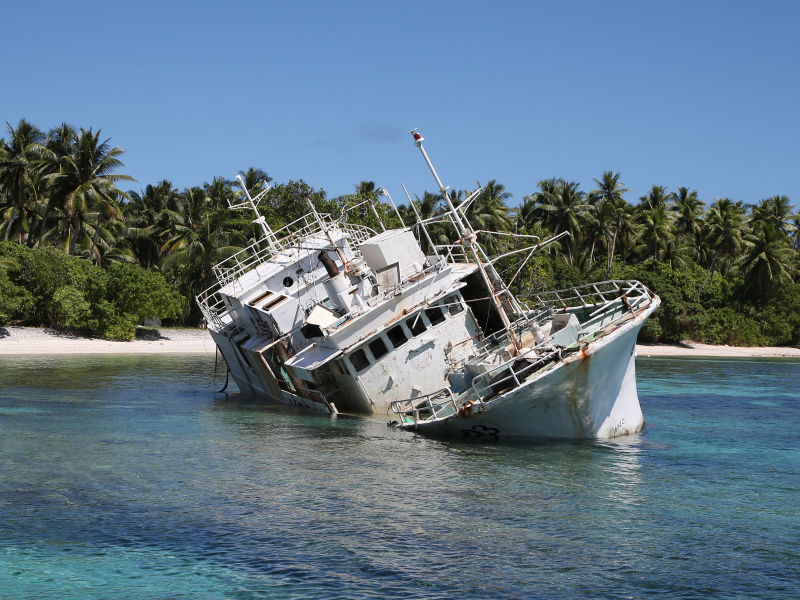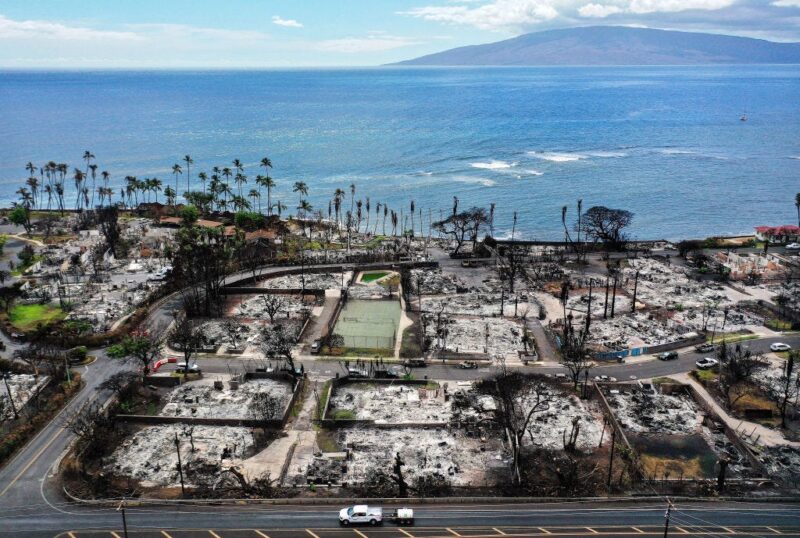- Rising sea levels linked to climate change threaten to make over a thousand low-lying tropical islands “uninhabitable” by the mid-21st century, including the locations of vital US military installations that would protect the US mainland from attack.
- The research, which the US military helped pay for, found that wave-driven overwash could devastate infrastructure and contaminate the “freshwater availability” on these islands with saltwater.
- Experts broadly agree climate change poses a significant challenge to national security as well and don’t see President Donald Trump doing anything to address this issue.
Rising sea levels linked to climate change threaten to make over a thousand low-lying tropical islands “uninhabitable” by the mid-21st century, including the locations of vital US military installations that would protect the US mainland from attack, according to an alarming new report published in Science Advances.
The research, which the US military helped pay for, found wave-driven overwash could devastate infrastructure and contaminate the “freshwater availability” on these islands with saltwater. In other words, rising sea levels and flooding threaten to ruin drinkable water supplies, making these islands virtually impossible to live on.
The study was conducted by the US Geological Survey, the National Oceanographic and Atmospheric Administration, Deltares and the University of Hawaii.
Some of the military installations on these islands are designed to help protect the US from missile attacks
The research focused on Roi-Namur Island on Kwajalein Atoll, a part of the Marshall Islands, which also happens to be the location of part of the Ronald Reagan Ballistic Missile Defense Test Site. The site is designed to help the US prepare for long-range missile attacks from other countries, including North Korea.
The Washington Post noted that, with Kwajalein Atoll, the US "can practice launching or deflecting nuclear attacks, provide a territorial bulwark against China, [and] immediately detect any launch out of Asia (read: North Korea)."
A September 2016 report from the Center for Climate and Security described the site as a "key [Department of Defense] asset for testing missiles and missile interceptors and conducting work for U.S. Strategic Command, NASA, and others."
In May 2017, as North Korea conducted a series of long-range missile tests as part of its larger goal of creating a nuclear weapon capable of reaching the US mainland, the US military successfully destroyed a mock intercontinental ballistic missile over the Pacific. The mock threat was launched from the Marshall Islands and it was successfully thwarted by an interceptor launched from a silo at Vandenberg Air Force Base in California. At the time, Navy Capt. Jeff Davis said, "North Korea is obviously one of the reasons why we have this capability."

Defense Department spokeswoman Heather Babb told The Washington Post the study "provided a better understanding of how atoll islands may be affected by a changing climate."
"While no decisions have been made about Department of Defense activities on the islands based on the study, DOD continues to focus on ensuring its installations and infrastructure are resilient to a wide range of threats. The department's understanding of rising sea levels will enable the military services and agencies in affected areas to make informed decisions on how to continue to execute their missions, Babb added.
Meanwhile, President Donald Trump has stacked his cabinet with climate change skeptics, which has had a clear effect on his policies. The national security strategy the Trump administration released in December made no mention of climate change whatsoever, despite the fact Defense Secretary James Mattis has acknowledged it as a threat.
"Climate change is impacting stability in areas of the world where our troops are operating today," Mattis said in unpublished testimony provided to the Senate Armed Services Committee following his confirmation hearing in January 2017.
Experts broadly agree that climate change poses a significant challenge to national security as well and don't see Trump doing anything to address this issue.
'I'm not aware of actions being taken by this administration to address this risk'
"Climate change both threatens [Department of Defense] assets globally and appears to enhance the risk of civil conflict in conflict-prone countries," Dr. Robert Kopp, a professor in the department of Earth and planetary sciences at Rutgers University and associate director of the Rutgers Energy Institute, told Business Insider.
"I'm not aware of actions being taken by this administration to address this risk," he added.
Dr. Victoria Keener, a research fellow at the East-West Center in Honolulu, Hawaii, whose research focuses on the impact of climate change in Pacific Island communities, expressed similar sentiments.
"It's fair to say that climate change poses a direct and indirect threat to US security. Directly from increasing impacts from sea level rise, waves, and intense storms on coastal military infrastructure; indirectly from salinized groundwater supplies and soils, threats to human health, and human migration induced by climate impacts and instability," Keener told Business Insider.
"While the threats are imminent, Guam and the Marshall Islands are being proactive in identifying the problems and starting to plan adaptations and solutions," Keener added.
Guam is also home to key US military assets, including Andersen Air Force Base, and North Korea threatened to launch missiles at the US territory more than once in 2017.
Scientists in Guam have warned climate change poses a direct threat to the island, which is the closest US territory to North Korea. US bombers stationed in Guam would undoubtedly play a key role in any military operations in the region. But research has shown Guam is among the top five most vulnerable US military installations worldwide due to coastal erosion, extreme weather and rising sea levels linked to climate change.











